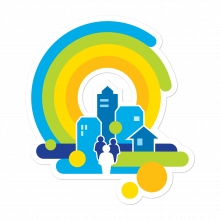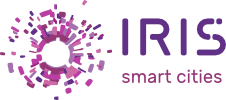
The European Innovation Partnership of Smart Cities (EIP-SCC) recently spoke with Utrecht digital strategist Pieter in ’t Hout and IRIS project coordinator Haye Folkertsma get insights on the city’s civic engagement practices. Here’s what they had to say:
“Citizen engagement is primordial to the IRIS project: Utrecht wants to be a socially inclusive city, with citizens in the driver’s seat. Only by means of co-creation with citizens, inclusive, user-driven city infrastructures and services can be achieved.
Besides the residents, the residential area involved in Iris is the main target group because the housing blocks owned by housing corporation Bo-ex form the demonstration area. These buildings need to be renovated. Success of the project depends highly on the way the joined partner organisations are able to satisfy the needs and demands of the target groups. Citizens’ involvement and/or financial benefits for the habitants are crucial success factors. If the project succeeds, this triggers a ‘MeToo’-effect (from other citizens in similar housings in consideration). If the first project (the renewal of one apartment building) fails, the next blocks are going to be tough!
Communication plays a central role in informing and engaging citizens in the demonstration area and informing residents of the development of smart services for these and in future other citizens. What also binds our three Lighthouse cities, namely Utrecht, Nice and Gothenburg, is that we all understand very well that an integrated solution is not integrated if the issues around citizen engagement and citizens’ empowerment are not fully embedded within implementation and evaluation cycles. The three cities all have solid experience and high ambitions regarding community participation empowerment for the development of sustainable business models. They will demonstrate different ways to involve communities in collaborating, co-creating and co-developing solutions, spanning from increasing communication to creating initiatives bonding smart city actors together – at the level of individual, home, demonstration district, and city as whole.
Design and demonstration of feedback mechanisms and inclusive services for citizens to achieve that they are intrinsically motivated to (i) save energy, (ii) shift their energy consumption to periods with redundant renewables, (iii) use electric vehicles and (iv) change the vehicle ownership culture towards a use or common mobility assets culture. Demonstrated solutions include game-theory based engagement methods and instruments ranging from co-creating infotainment apps, local school campaigns, offering training on the job to students living in the district by partaking in the demo activities, competitive energy games using the home energy management system, energy ambassadors creating local energy communities, to crowd-funding creating a sense of being part of the solution.”
Read the full interview
16 Jan 2018

